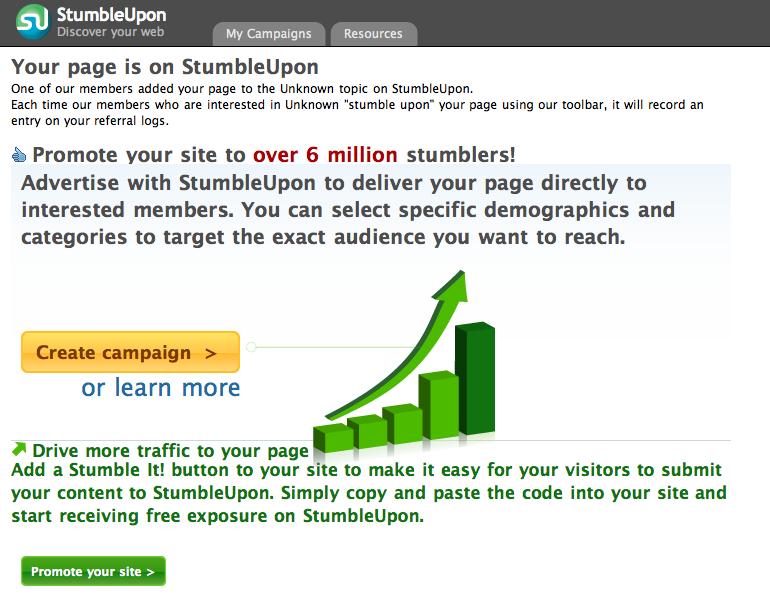Chapter 14. Tracking and Responding
Engaging a community is one thing; understanding the results of those engagements is another entirely. If we’re going to link community activity to business outcomes, we need to track conversations and respond when appropriate.
Our ability to track what’s said online varies widely depending on where that conversation is taking place. Some community platforms, like Twitter, are wide open, myriad tools for analysis and search. Others, such as Facebook, are firmly closed—third parties are forbidden from extracting information and publishing it elsewhere, and while the company is putting some carefully designed gates in its walled garden, Facebook can’t easily be crawled, curtailing the number of community management tools that can work with it.
It’s not just Facebook. StumbleUpon, shown in Figure 14-1, shows a promotion for marketers when you follow a referring link from its site. There are ways around this, primarily by installing and using the StumbleUpon toolbar, as described by Tony Adam at http://tonyadam.com/blog/checking-stumbleupon-referrals-reviews-urls. For community operators, there’s a constant tension between the desire to be open (with the community development, rapid growth, and innovation this entails) and the desire to monetize the community somehow by controlling who has access to information on its activity.

Figure 14-1. StumbleUpon’s ...
Get Complete Web Monitoring now with the O’Reilly learning platform.
O’Reilly members experience books, live events, courses curated by job role, and more from O’Reilly and nearly 200 top publishers.

